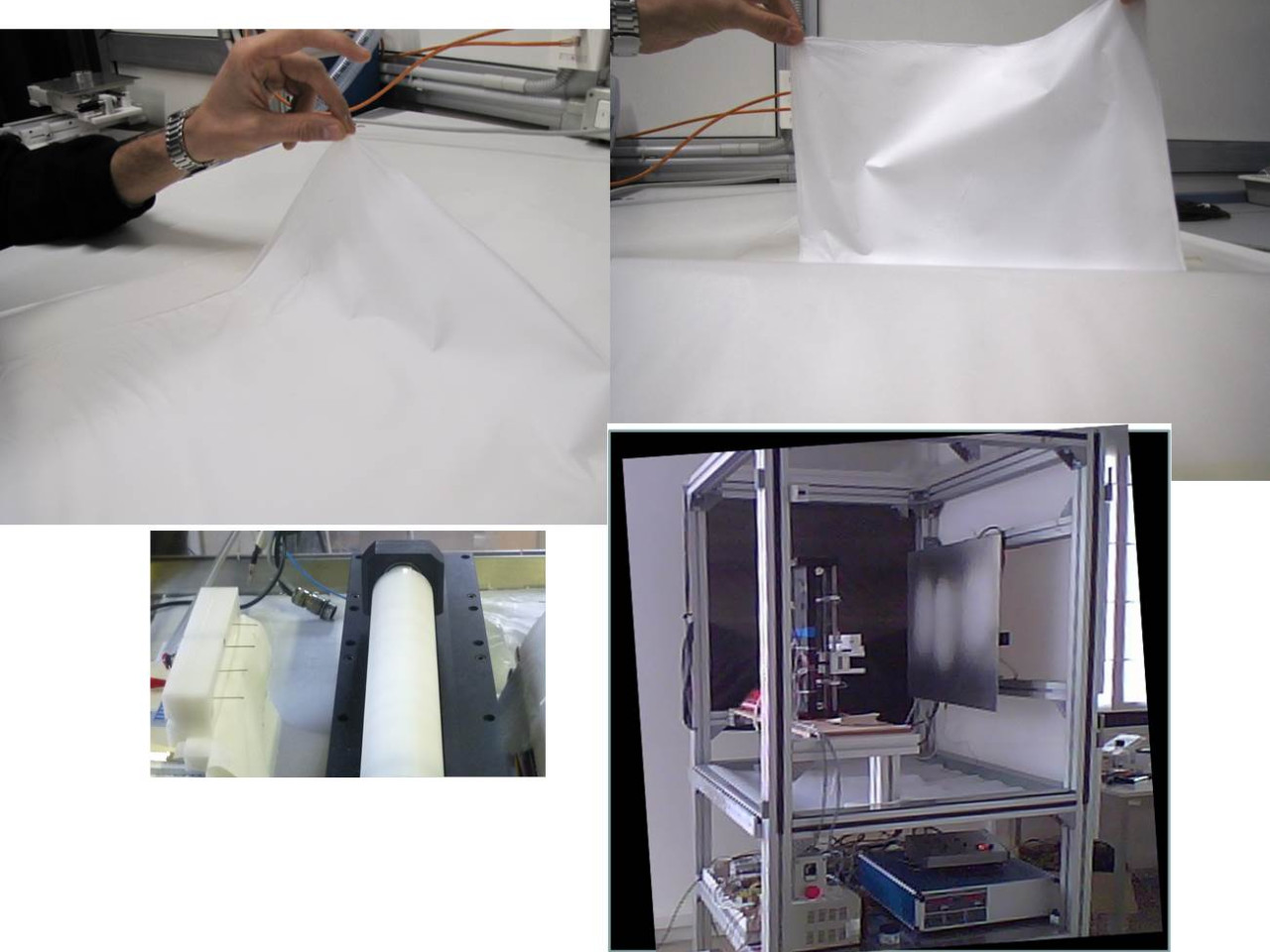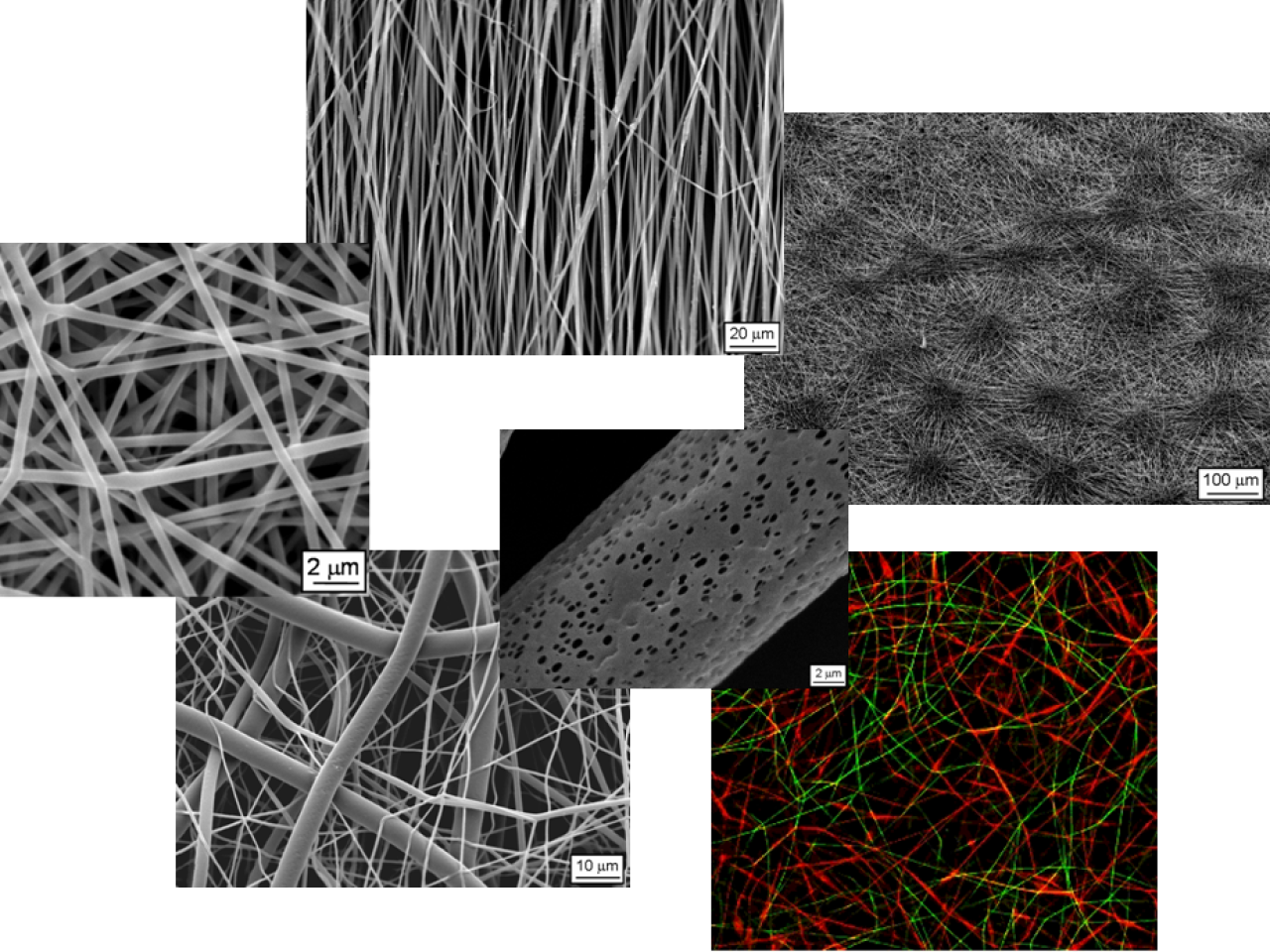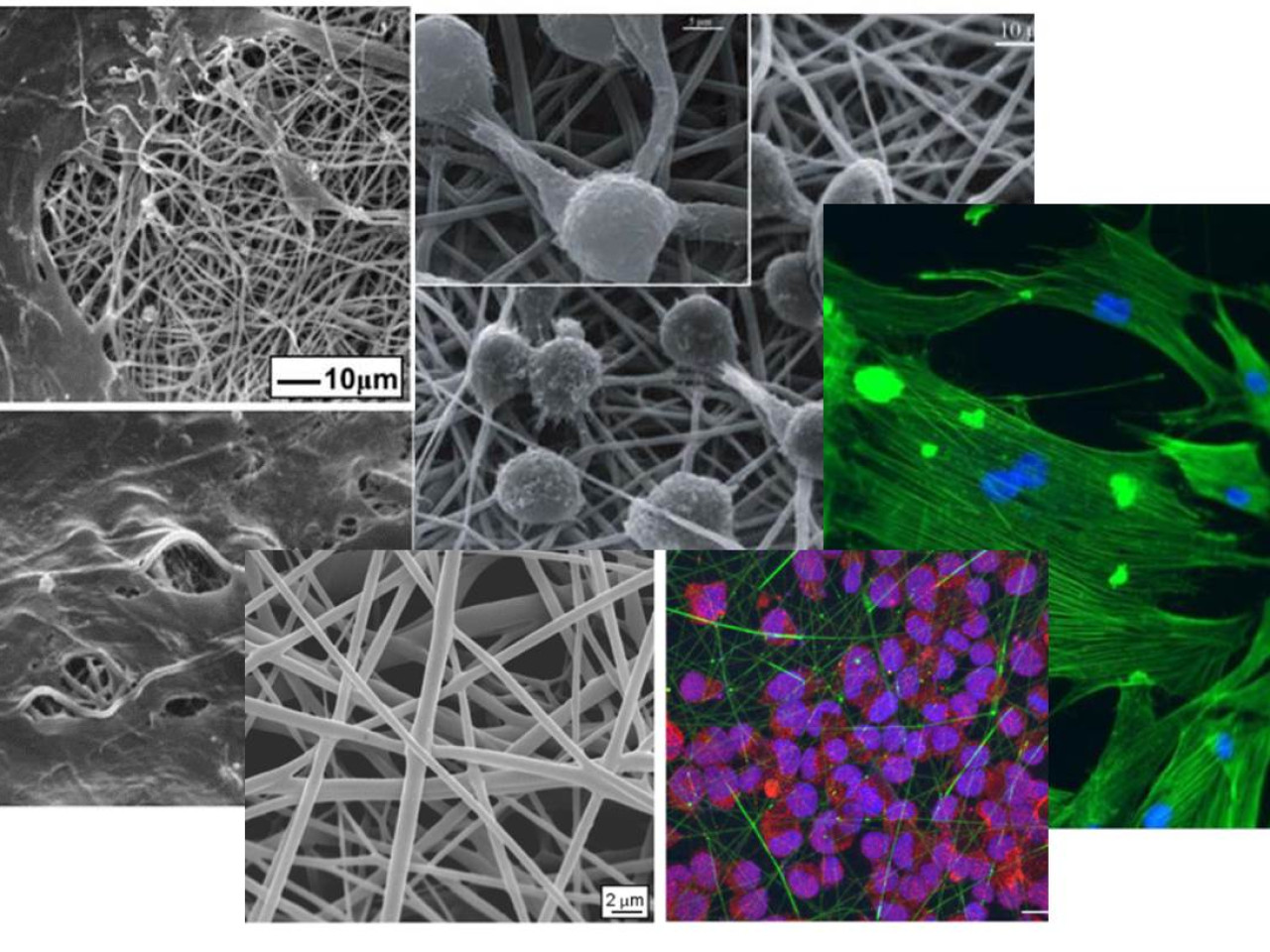The use of three-dimensional supports (scaffolds) as a guide to cellular growth in culture, fosters considerable hopes in the field of regenerative medicine. The electrospinning technology makes it possible to produce nanofibrous scaffolds able to mimic the fibrous protein component of the extracellular matrix, whose morphology and composition affect cell adhesion, proliferation and differentiation. The high porosity of electrospun structures supports efficient diffusion of substances and cells in the scaffold and at the implant site. Furthermore, the good mechanical properties and high flexibility of the scaffolds lead to great versatility in terms of applications in tissue engineering, filling of cavities, wrapping of nerves, covering lesion breaches, representing a versatile tool with potential applications in many types of tissue injury.
 Production of nanofibrous media
Production of nanofibrous media
Three-dimensional polymeric scaffolds may be fabricated with variable architecture depending on the organ on which they are to be transferred. Furthermore, it is also possible to produce scaffolds functionalised with bioactive molecules able to support processes of stem cell adhesion, proliferation and differentiation. The electrospinning instrumentation available at the laboratory also makes it possible to produce composite scaffolds that feature heterogeneity in terms of (a) fibre size, (b) chemical composition (c) inclusion of micro- and/or nano-particles.
Potential applications concern the use of scaffolds for in vitro cell growth and differentiation, whose architectural, chemical and bio-resorbability features may be controlled and adapted in view if the specific required application. The technology transfer may focus on the biomedical and regenerative medicine sectors, active in the production and use of polymer supports to be used as guide to cellular growth in culture.
 Electrospun nanofibres with different morphology
Electrospun nanofibres with different morphology
New mimetic and nano-structured material, to be used for skin tissue repair.
One of the applications of the material concerns tissue engineering techniques and specifically skin repair treatments for in vivo regeneration of the epithelial tissue. The material, consisting of bio-compatible and bioabsorbable polymers, is produced through the electrospinning technique, which yield high porosity nanofibrous structures, biomimetic of the extracellular matrix, and which promote skin regeneration. Furthermore, the material may be applied for administering and conveying therapeutic medications with antibacterial and healing action. Products have been developed for potential applications in tissue engineering, consisting of polylactic acid nanofibres, able to support the adhesion and proliferation of various types of cells. In particular, a new biomimetic and nano-structured material has been developed, to be employed for cutaneous tissue repair. The results have been covered by a number of publications on international peer reviewed journals.
Ri.Mos. s.r.l.
Participation in a regional project in collaboration with Ri.Mos s.r.l. entitled “New biomimetic nano-structured material from electrospinning for cutaneous tissue repair and other advanced medication uses“ Patent - Proprietor Ri.mos srl; "Substrate of polymeric material and method of carrying out thereof" PCT Patent Application (filed on November 3, 2009) at No. PCT/SM2009/000009
 Cells on electrospinning nanofibres
Cells on electrospinning nanofibres

